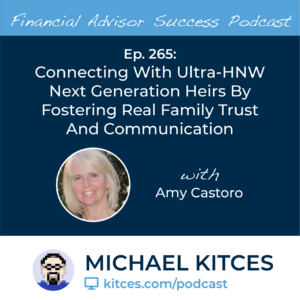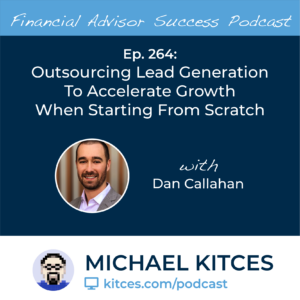When financial advisors are faced with the decision to relocate their firm to another state, there is often an immediate tendency for the advisor to worry about losing clients who signed on with the expectation of being able to meet with the advisor in person throughout the engagement. But in today’s environment, with the availability of convenient virtual meeting technology and the increasing normality of working from home, do advisors really need to worry that much about losing their clients due to relocation? Even with the accommodations to conduct remote meetings, advisors can still find it difficult to have the conversation of ‘leaving’ clients behind when they need to relocate – even when they intend to maintain the relationship remotely.
In our 78th episode of Kitces & Carl, Michael Kitces and client communication expert Carl Richards discuss how advisors can approach the conversation with confidence and honesty to quell the fears and anxiety of their clients, while remaining calm themselves.
As a starting point, it’s important to put the idea of jeopardizing client relationships into perspective, because even though clients may have been onboarded in person, many will likely be open to continuing the relationship on a virtual basis, especially in our current era of remote work and digital communication. And while it is easy to imagine any number of scenarios where clients may want to leave their advisor, unless there are serious issues in the advisor-client relationship itself, clients actually tend to prefer staying with an advisor they trust – regardless of where their physical office may be – and aren’t generally looking for a reason to leave the relationship at any given moment. Because the trust a client has in their advisor is usually a function of the advisor’s ability to provide outstanding service… and not so much of the physical location of the advisor’s office.
To maintain that trust, advisors can arrange a meeting or phone call with the client to discuss the transition and reassure the client that they can still expect the same level of service and attention as before. Sending an email prior to the meeting to initiate the conversation can be a good opportunity for the advisor to reassure the clients that the relationship will, in fact, continue, and to provide an overview of what, if anything, will need to change. This gives clients a chance to absorb the news and identify any questions or concerns they may have that can be discussed in more depth during the meeting.
Ultimately, the key point is that communicating with clients about intentions to move a firm begins with being honest, compassionate, and confident. Even if a few clients may be lost in the process, advisors will undoubtedly have opportunities to find more clients in their new location. But by taking to heart the tremendous value they offer to clients, advisors can trust that they will always be able to maintain their client relationships potentially anywhere they may choose to go!

 Welcome back to the 265th episode of the Financial Advisor Success Podcast!
Welcome back to the 265th episode of the Financial Advisor Success Podcast! Welcome back to the 264th episode of the Financial Advisor Success Podcast!
Welcome back to the 264th episode of the Financial Advisor Success Podcast!
